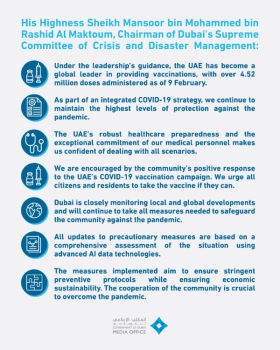Saudi Arabia turns to e-commerce during Covid-19 outbreak

Restrictions on movement and trade as a result of the Covid-19 pandemic have led to a significant shift in consumer behaviour in Saudi Arabia, with locals increasingly turning to digital channels.
Worldwide, cases of Covid-19 have risen to 859,000 and 42,000 deaths have been attributed to the virus as of the morning of April 1. However, Saudi Arabia has seen relatively few infections, with 1563 cases and 10 deaths to date.
The Kingdom recorded its first case of Covid-19 on March 2, and the first virus-related fatality – a 51-year- old Afghani resident in the country – on March 23.
The first death coincided with the introduction of a 21-day nationwide curfew, also announced on March 23, which prohibits people from leaving their homes between the hours of 7.00pm and 6.00am.
This was followed two days later by a tightening of measures designed to stop the spread of the virus.
The government announced a lockdown of the capital Riyadh and the holy cities Makkah and Medina. It also extended the curfew in all three places, bringing forward the start time to 3.00pm, while forbidding movement between all provinces in the Kingdom.
In terms of international movements, all international flights were suspended on March 15 for a period of two weeks, although this could be extended.
Significant boost for e-commerce
Despite the comparatively limited medical impact on the Kingdom, the threat presented by the virus – alongside efforts to maintain social distancing – has led to a significant shift in lifestyle and consumer habits, with e-commerce experiencing a rapid spike in growth.
In late March local online retailer BinDawood Holding told local media that, since the escalation of the Covid- 19 crisis, its average sales on a 10-day basis had increased by 200%, while its average order value rose by 50% and app installations by 400%.
https://oxfordbusinessgroup.com/news/saudi-arabia-turns-e-commerce-during-covid-19-outbreak
Saudi Arabia turns to e-commerce during Covid-19 outbreak | Saudi Arabia 2020 | Oxford Business Group
The company has two e-commerce platforms – BinDawood and Danube – which are connected to their respective supermarket and hypermarket chains, enabling customers to purchases groceries and other goods online.
While the economic impacts of the virus have seen many businesses close and millions of people lose their jobs globally, BinDawood officials say the rapid growth in activity has helped the company buck these trends.
All of the company’s 72 stores remain open, including the newest Danube store, which opened last week in Riyadh’s Al Andalus district. The company has also hired more packers and drivers to keep up with demand for online deliveries.
Elsewhere, fellow Saudi grocery delivery app Nana has also benefitted from the recent turn towards online shopping, raising $18m in a Series B funding round in late March to expand operations across the Middle East, with investors including venture capital funds Saudi Technology Ventures and Middle East Venture Partners. This follows a Series A funding round that raised $6m last year.
The company has expanded capacity three-fold following a surge in demand associated with the Covid-19 outbreak. This is expected to continue in light of the Saudi government’s decision to impose tighter curfews in major cities.
Looking ahead, retailers may need to adapt their supply chains in response to shifting market dynamics. "Vertical integration is a pivotal development strategy, especially considering the recent spike in demand for e-commerce and fresh food delivery, which Saudi Arabia's supply can hardly meet," Seifallah Sharbatly, Managing Director of Sharbalty Fruit, told OBG.
Sector growth targets
The emergence of online retail, albeit during a time of crisis, aligns with some of the goals of Saudi Arabia’s overarching strategies.
As part of the Financial Sector Development Programme – itself part of Vision 2030, the Kingdom’s long- term development plan – the government hopes to increase the proportion of online payments to 70% by 2030, up from the 2020 target of 28%.
To help incentivise this growth and ensure long-term sustainability in the segment, the government has also sought to improve the regulatory framework.
In October last year the government implemented the E-commerce Law, designed to regulate digital payments and improve transparency, while on January 31 the Ministry of Commerce and Investment adopted the Implementing Regulations of the E-commerce Law, adding increased oversight to areas such as personal data protection, consumer rights and disclosure obligations.
https://oxfordbusinessgroup.com/news/saudi-arabia-turns-e-commerce-during-covid-19-outbreak
Saudi Arabia turns to e-commerce during Covid-19 outbreak | Saudi Arabia 2020 | Oxford Business Group
Broader economic impact
Aside from e-commerce, the Covid-19 pandemic has had significant impacts on other parts of the Saudi economy. Above all, the outbreak of the virus has led to a significant drop in global demand for oil, which resulted in the price falling from yearly highs of just under $69per barrel on January 6, to $26.82 by the end of March.
Given that oil was responsible for an estimated 63% of national revenue, according to IMF projections, the sharp fall in prices is set to place significant pressure on government budgets.
"The impact of Covid-19 – and the most recent drop in oil prices – on foreign trade will affect the Saudi balance of payments this year and beyond. The magnitude of this impact will largely depend on Saudi export oil prices," Hans-Peter Huber, chief investment officer of investment bank Riyad Capital, told OBG.
"On the other hand, as there are major travel restrictions in place globally, the virus will affect both inbound and outbound tourism, so the direct net impact of Covid-19 on the trade balance should be relatively small. Furthermore, the lower oil prices and virus-related lockdown should lead to lower domestic growth, which in turn has a dampening impact on import demand.”
Furthermore, the Economist Intelligence Unit has forecast that the Saudi economy will contract by 5% this year, down on initial predictions of 1% growth.




